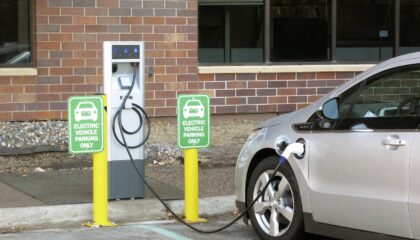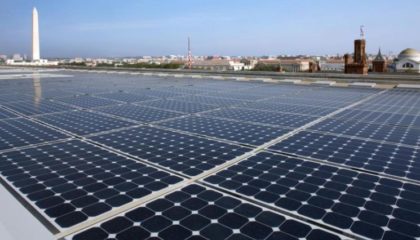Solar energy isn’t just a smart choice for the environment – it’s also a savvy move for your wallet. The federal solar tax credit, a key financial incentive, has made the leap into solar energy more appealing and attainable for homeowners nationwide. This guide will explore the ins and outs of this tax credit, shedding light on how it works, who qualifies, and the steps you need to take to benefit from it. Understanding this credit can make a significant difference in your solar energy investment, ensuring that you contribute to a greener planet and optimize your financial returns.
What is a Tax Credit Anyway?
Let’s start with the basics. A tax credit is a reduction in the amount of taxes you owe. Unlike deductions, which lower your taxable income, credits are more advantageous as they directly reduce your tax bill on a dollar-for-dollar basis. Imagine you owe $3,000 in federal taxes and are eligible for a $1,000 tax credit; your tax bill drops to $2,000. It’s an effective tool to encourage certain investments, like solar energy, by easing the financial burden on taxpayers.
Shining Light on the Federal Solar Tax Credit
The federal residential solar energy credit is not just another tax incentive; it’s a substantial financial benefit for homeowners who adopt solar technology. This credit allows individuals to claim a specific percentage of the total cost of their solar photovoltaic (PV) system on their federal income taxes. The percentage of the credit depends on when the system was installed. For instance, systems installed in 2020 and 2021 are eligible for a 26% credit, while those installed between 2022 and 2032 can claim a 30% credit. However, it’s essential to note that this generous incentive only lasts for a while. After 2032, the credit decreases and eventually phases out by the end of 2035. This timeline creates a sense of urgency for homeowners contemplating solar power, emphasizing the need to act sooner rather than later to maximize their financial benefit.
Eligibility: Who Can Soak Up the Sun?
Determining eligibility for the solar tax credit is straightforward but crucial. First, your solar PV system must have been installed between January 1, 2017, and December 31, 2034. It’s also important that the system is located at a residence in the United States and that you own it. Ownership can be direct, such as purchasing it outright or through financing, or indirect, like buying an interest in a community solar project. However, if you’re leasing the system or simply buying electricity from a community solar project, you won’t qualify for the credit. These eligibility criteria aim to ensure that the tax credit benefits are directed toward individuals who have invested directly in solar energy.
Covered Costs: What’s Included?
The range of expenses that qualify for the tax credit is quite comprehensive, which is excellent news for homeowners. These expenses include the cost of solar PV panels, contractor labor for onsite preparation, assembly, or original installation, and necessary balance-of-system equipment such as wiring, inverters, and mounting gear. Additionally, energy storage devices with a capacity of 3 kilowatt-hours or more, installed after December 31, 2022, are eligible. It’s important to note that these devices must still meet the installation date requirements for the credit. Even the sales taxes on these eligible expenses can be included, further increasing the financial benefits of going solar.
Balancing Other Incentives with the Federal Credit
Understanding how the federal solar tax credit interacts with other incentives is crucial for accurately calculating your potential savings. Generally, utility rebates for solar installation are subtracted from your system costs before you calculate your tax credit. This ensures that the credit is calculated based on your net investment in the system. On the other hand, payments received for renewable energy certificates, often considered taxable income, do not reduce your federal tax credit. State government rebates usually don’t reduce your federal tax credit either. This complex interplay of incentives underscores the importance of careful calculation to maximize your benefits.
Navigating Special Cases
The federal solar tax credit is quite accommodating regarding different homeowner scenarios. Whether you’re not a homeowner but contribute to a cooperative housing corporation or a condo, have installed solar on a vacation home, or live off-grid, there are provisions to include a wide range of situations. The versatility of this credit makes it accessible to more than just traditional homeowners, expanding the potential for solar adoption. Furthermore, financing your solar PV system does not exclude you from claiming the credit, making solar energy more accessible regardless of immediate financial resources.
Answering Your Burning Questions
When it comes to tax credits, there’s always a flurry of questions. Most notably, this is a nonrefundable credit, meaning it can reduce your tax bill to zero without a cash refund. However, if the credit exceeds your tax liability, you can carry it over to the next year. There’s no cap on the amount you can claim, which is particularly beneficial for larger installations. And while you can’t claim the credit for used equipment, you can use it against your regular federal income tax and the alternative minimum tax, adding to its flexibility.
Claiming Your Piece of the Sun
Claiming the solar tax credit requires careful attention. After verifying your eligibility and understanding the intricacies of the credit, the next step is to complete IRS Form 5695 and attach it to your federal tax return. This process is straightforward, but the importance of accuracy must be balanced. A mistake here could mean missing out on significant savings. It’s always a good idea to seek professional tax advice to ensure you’re fully leveraging the benefits of the solar tax credit.
A Bright Future Awaits
The federal solar tax credit is a powerful incentive that significantly reduces the financial barriers to solar energy adoption. By understanding and utilizing this credit, homeowners can contribute to environmental sustainability and enjoy considerable tax savings. As solar technology becomes increasingly mainstream, this tax credit is a key factor in making solar installations more accessible and appealing. If you’re considering the switch to solar, there’s no better time than now to explore your options and take advantage of these financial benefits.
At SolFarm Solar Co., we’re committed to helping you navigate the path to solar energy, ensuring you make the most of every opportunity for savings and sustainability. Contact us for personalized assistance and start your journey to a brighter, greener, and more financially savvy future with solar energy.














